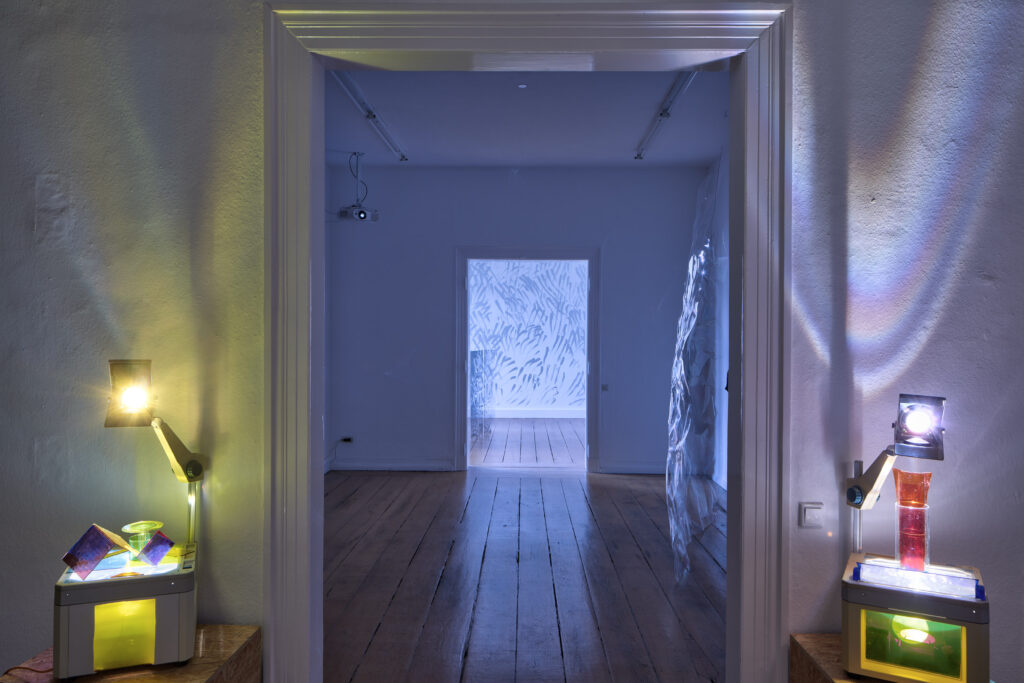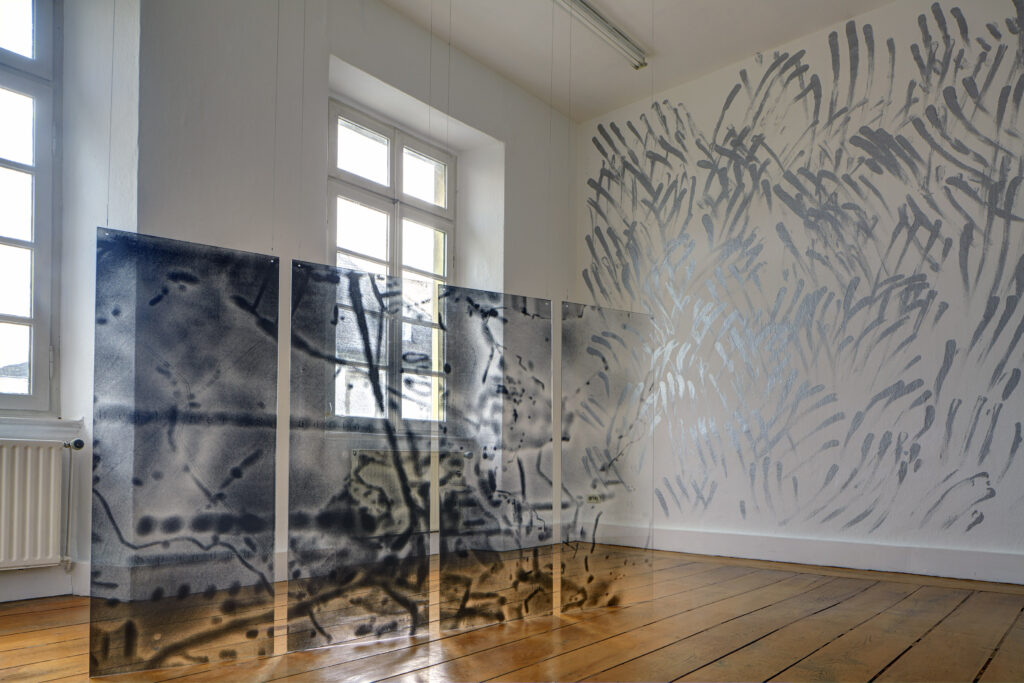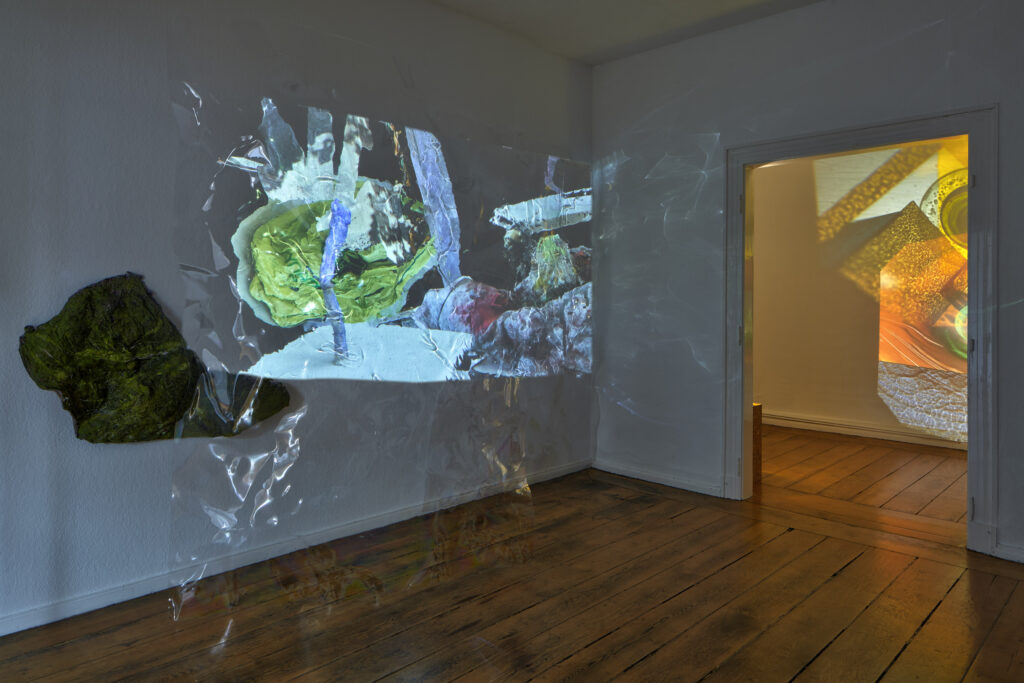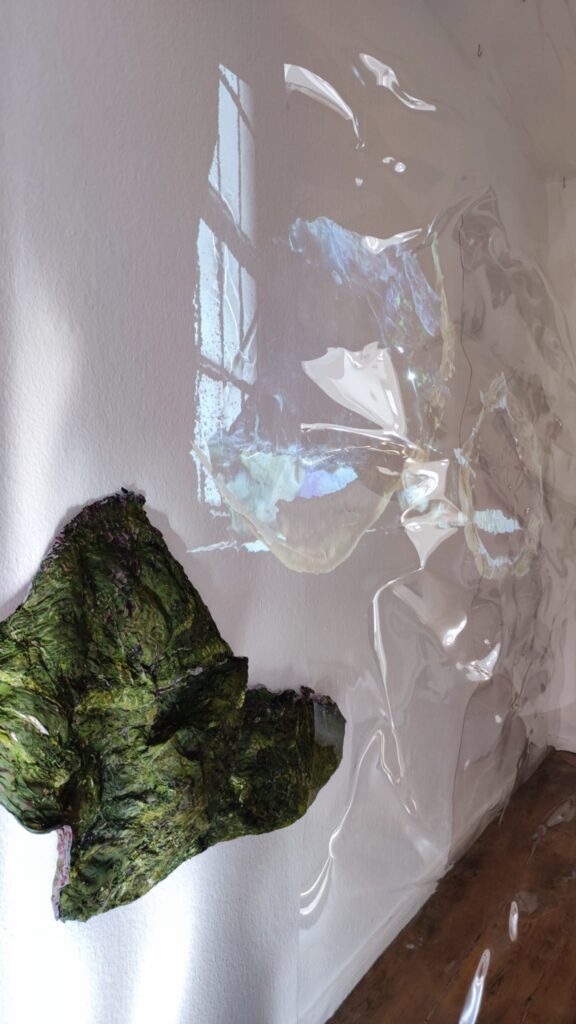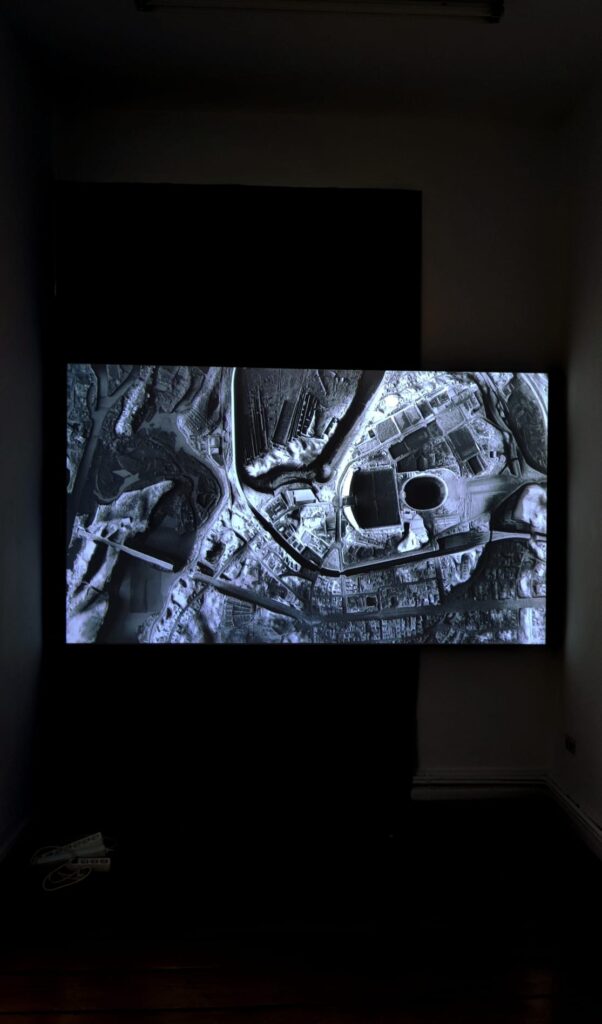PAINTED MATTER II
Wagehe Raufi, Neda Saeedi, Benedikt Terwiel,
Friederike Feldmann
October 13 - November 17, 2024
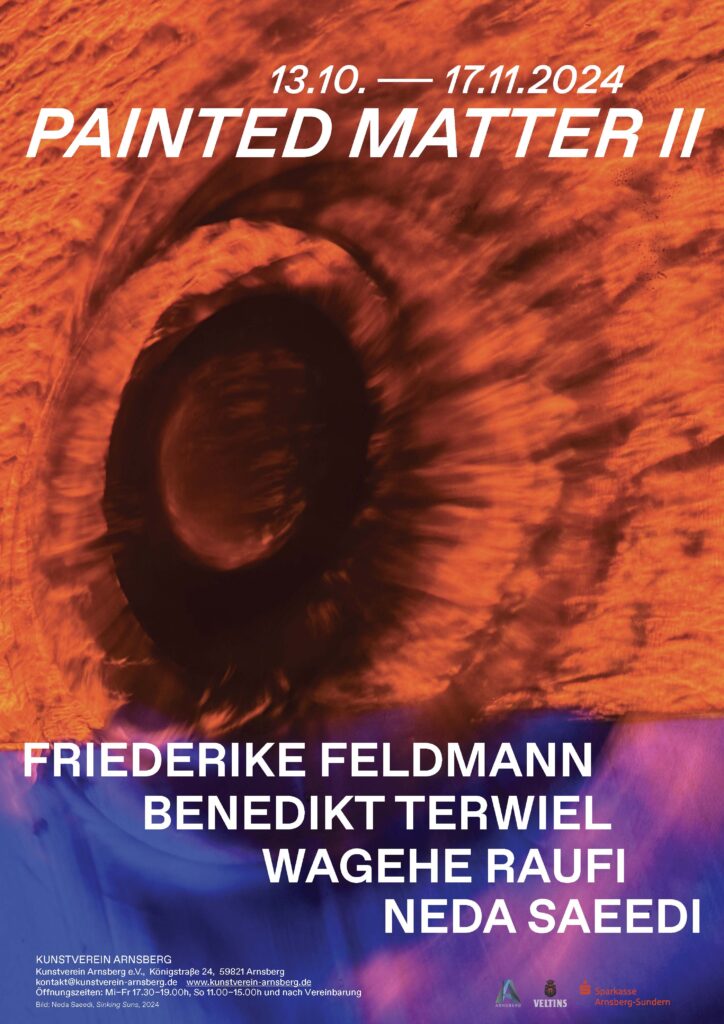
The next exhibition at Kunstverein Arnsberg, Painted Matter II explores the medium of painting from a contemporary perspective. Last year, we launched the Painted Matter series to explore what painting can mean today and how the boundaries of the medium are shifting. This year we are going one step further and ending up with Expanded Painting. This is a form of painting that goes beyond the easel and the physical boundaries of the painting to experience how far painting can go in space and time. By extending beyond the wall, it incorporates objects and environments and mixes with sculpture, installation, video and photography in unexpected ways. But can we still speak of painting when the brush disappears and makes way for (digital) gestures and reflections in space?
Benedikt Terwiel studied painting, but now turns to experimental cartography and creates fascinating landscape images in which the aim is not to find out where you are, but to immerse the viewer in fictional worlds. His video work Westend (2023) is a portrait of the topography of the Berlin district of the same name. Westend marks the boundary of an early, settlement-historical expansion to the west, which resulted in massive interventions in the topography of the area. With the disappearance of human development, a vast landscape of nameless traces is revealed, whose placelessness and timelessness make it appear as an archaeological site of lost cultures.
The works Muttersteine (2024) are screen prints on 4 glass plates (150 x 60 cm each) and are based on the Berlin "Muttersteine", lithographic stones that were used until the middle of the 20th century in the Berlin Cartographic Institute to store and update maps. The maps drawn on them were constantly updated through revisions and corrections in order to keep pace with the development of the growing city. These numerous changes resulted in a unique topography of retouching on the surface of the stones. For the work of the same name, "Muttersteine", the surface of a stone was scanned in high resolution in order to produce enlargements from the data obtained. The results show landscapes in which the fine retouching of the stone has grown into a landscape of craters, hollows and depressions.
In Neda Saeedis Arbeit Shifting Landscapes In Neda Saeedi's work Sinking Suns (2024), we see two open, technically transparent retro projectors, whereby the projection of a mini glass sculpture creates a digital painting on the wall. Her work is also about the translation of form and light and experimental image viewing. In her practice, the identity of a material is as important as the physical form it takes, so that the choice of material becomes the content of her work. The fleeting projection in space continues to be fixed and preserved in a fixed moment, the photograph, thus defining the theme of the expansion of space and medium.
Wagehe Raufis artistic and painterly research is an in-depth investigation at the interface between material presence and digital fragility. Her installations dissolve the boundaries between analog and digital space by letting real objects meet their logarithmic representation and assembling them into artificial landscapes. With her sculptures and video works, she attempts to expand digital space and integrate it into our immediate present. Her work Mammoth with glass eye (2019) manipulates various projection surfaces and surfaces by translating objects into other media and forms using different technical and analog methods. This way of scanning reality transforms the solid into porous and seemingly loosely connected surface formations, referencing the way we absorb and construct our environment.
Friederike Feldmann's painting knows no easel. She paints oversized handprints on the wall. As if a giant had scratched the wall, in gray paint. A (non-)color that stands for pollution and cloudiness. It refers to the origins of painting, to handprints or hand negatives in prehistoric caves, but also to everyday, even involuntary traces that our hands leave behind, such as wiping steamed-up windows or dabbing dirt on a towel. Is her approach a rebellion against the paralyzing claim of the timeless masterpiece? Because after the end of the exhibition, the work disappears and remains only in the documentation and in the memory of the audience. Her work stages traces, superhuman scratching on the wall, moves from painting to drawing and from there via line and shadow to graphic gesture.
Text: Pauline Doutreluingne
Dokumentation: Michel Ptasinski


